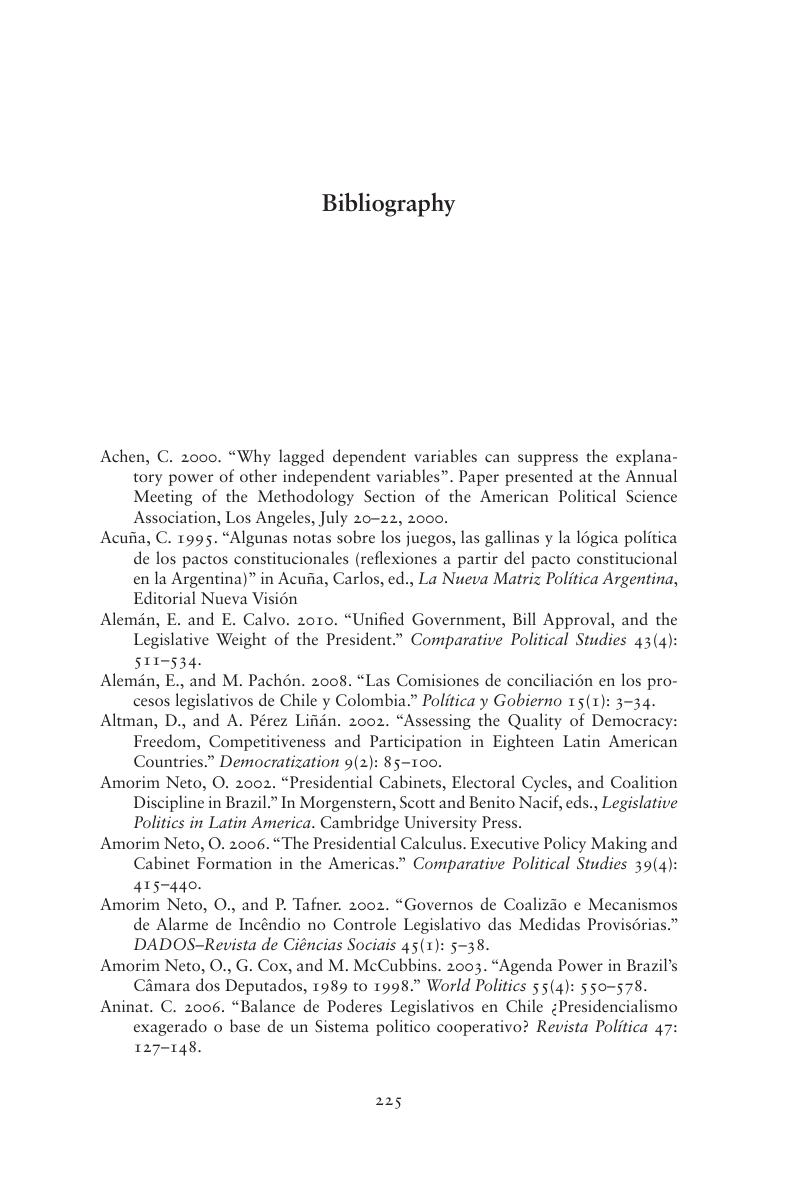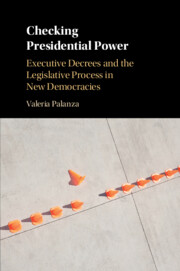Book contents
- Checking Presidential Power
- Checking Presidential Power
- Copyright page
- Dedication
- Contents
- Figures
- Tables
- Acknowledgments
- Abbreviations
- 1 Introduction
- 2 Decrees versus Statutes
- 3 Institutions and Institutional Commitment
- 4 Reinstatement of Congressional Decision Rights
- 5 A Corollary of Low Levels of Institutional Commitment
- 6 The Choice of Legislative Paths in Comparative Perspective
- 7 Conclusions
- Bibliography
- Index
- References
Bibliography
Published online by Cambridge University Press: 04 January 2019
- Checking Presidential Power
- Checking Presidential Power
- Copyright page
- Dedication
- Contents
- Figures
- Tables
- Acknowledgments
- Abbreviations
- 1 Introduction
- 2 Decrees versus Statutes
- 3 Institutions and Institutional Commitment
- 4 Reinstatement of Congressional Decision Rights
- 5 A Corollary of Low Levels of Institutional Commitment
- 6 The Choice of Legislative Paths in Comparative Perspective
- 7 Conclusions
- Bibliography
- Index
- References
Summary

- Type
- Chapter
- Information
- Checking Presidential PowerExecutive Decrees and the Legislative Process in New Democracies, pp. 225 - 238Publisher: Cambridge University PressPrint publication year: 2019

